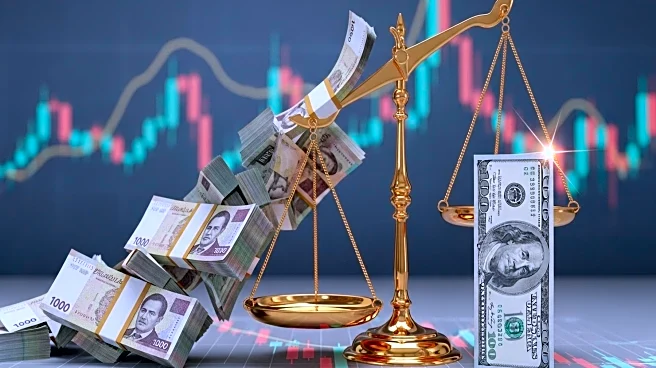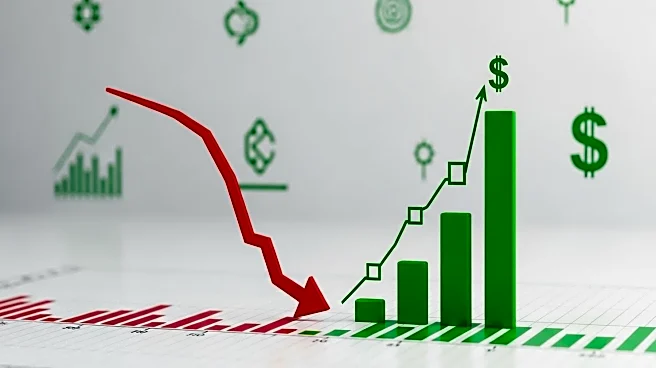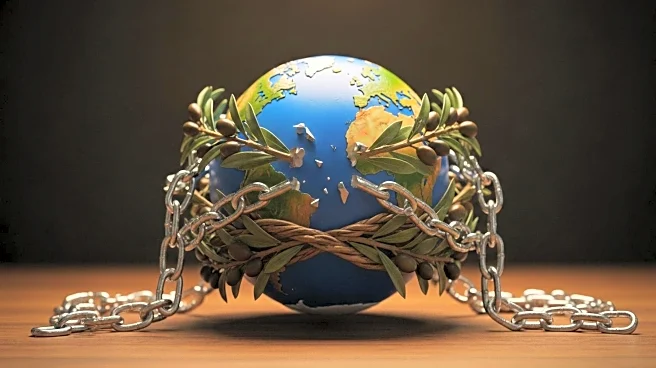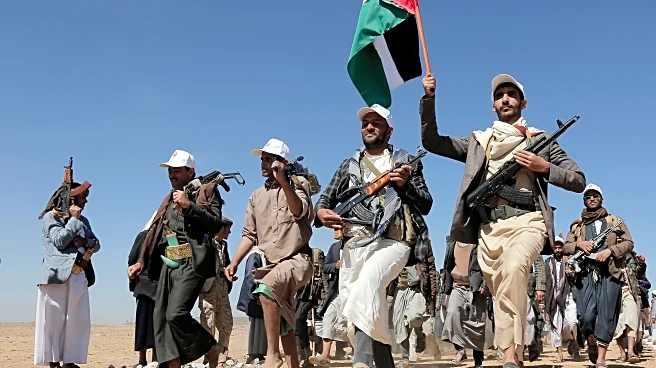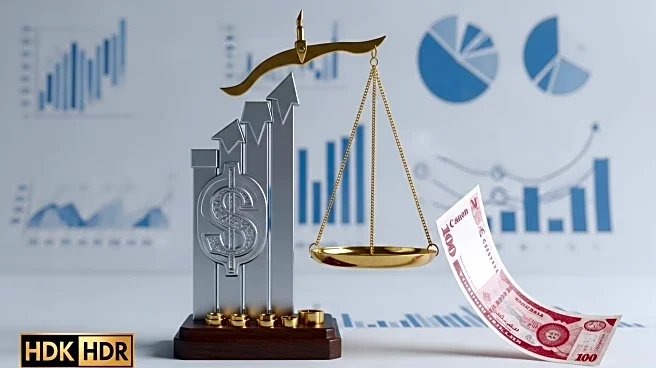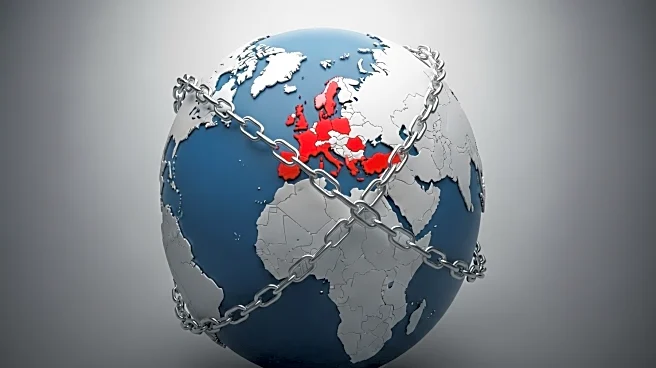What's Happening?
Iran's currency, the rial, has reached historic lows, trading at approximately IRR 1,080,000 to 1,130,000 per US dollar on the black market. This decline is attributed to ongoing U.S. and UN sanctions, which have severely impacted Iran's oil revenues and banking sector. The Central Bank of Iran has attempted to manage the situation through various measures, including auctions and policy tools, but the rial continues to weaken. The disparity between the official exchange rate and the black market rate highlights the economic challenges faced by Iran under the weight of international sanctions.
Why It's Important?
The plummeting value of the rial has significant implications for Iran's economy and its citizens. The devaluation increases the cost of imports, contributing to inflation and eroding purchasing power. As the rial weakens, more Iranians turn to the black market and cryptocurrencies to preserve their savings, further destabilizing the official currency market. The situation underscores the broader economic impact of sanctions, which restrict Iran's access to global financial systems and exacerbate economic hardships. The ongoing currency crisis could lead to increased social unrest and economic instability in the region.
Beyond the Headlines
The currency crisis in Iran is part of a larger pattern observed in other countries with tight foreign exchange controls, such as Venezuela and Argentina. These nations also experience significant gaps between official and black market rates, leading to economic distortions and corruption. The reliance on parallel markets reflects the challenges of maintaining economic stability under sanctions and restrictive monetary policies. The situation in Iran highlights the need for comprehensive economic reforms and potential sanctions relief to address the underlying issues and restore confidence in the national currency.

